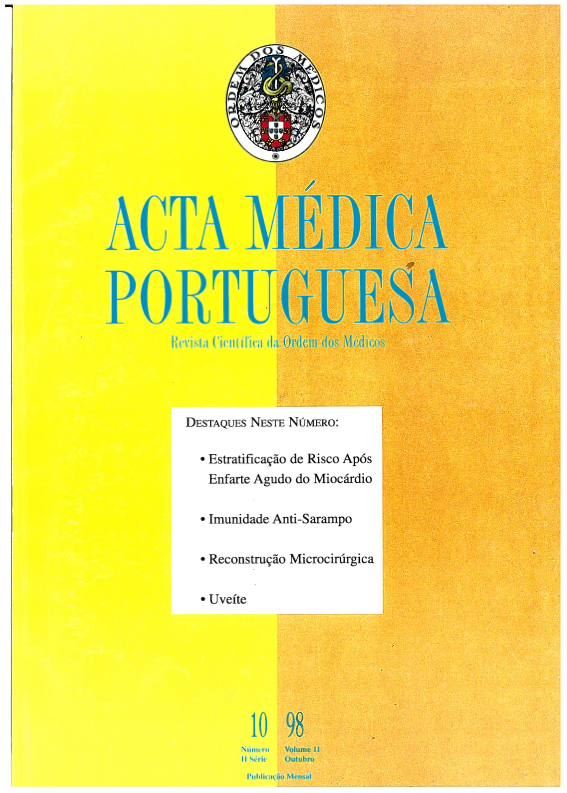Concentração de IgG anti-sarampo em soros maternos e do cordão umbilical. Segundo o estado vacinal das mães.
DOI:
https://doi.org/10.20344/amp.2335Resumo
A study on passive immunity against measles was conducted in four hospitals of Oporto, Portugal. The objectives were to assess whether maternal measles vaccination status was associated to the levels of measles IgG in maternal and cord sera, and with the transplacental transport efficiency. Cord and venous maternal blood samples were collected from 1539 mother-child pairs enrolled. An enzyme immunoassay was used to measure measles IgG levels in the study sera. Results were expressed in mIU/ml. Vaccination records were consulted. Geometric mean concentration of measles IgG among vaccinated mothers (730 mIU/ml; 95% CI 602 to 884 mIU/ml; n = 79) was significantly (P < 0.0001) lower than among their unvaccinated counterparts (1535 mIU/ml; 95% CI 1460 to 1613 mIU/ml; n = 1317). The same was observed in the corresponding cord sera: those born to vaccinated mothers had significantly (P < 0.0001) lower levels of measles IgG (1083 mIU/ml; 95% CI 908 to 1291) than the newborns of unvaccinated mothers (2230 mIU/ml; 95% CI 2119 to 2347). Transplacental transport efficiency was not related with maternal vaccination status (P = 0.67). Measles IgG levels observed in this Portuguese study were similar to those observed in a study conducted in South Africa, but higher than those reported in a British study. The differences in measles IgG levels between vaccinated and unvaccinated mothers (and corresponding newborns) are consistent with similar findings already published in different countries. The lower levels of measles IgG among children born to vaccinated mothers may lead to the anticipation of the recommended age to vaccinate against measles in Portugal.Downloads
Downloads
Como Citar
Edição
Secção
Licença
Todos os artigos publicados na AMP são de acesso aberto e cumprem os requisitos das agências de financiamento ou instituições académicas. Relativamente à utilização por terceiros a AMP rege-se pelos termos da licença Creative Commons ‘Atribuição – Uso Não-Comercial – (CC-BY-NC)’.
É da responsabilidade do autor obter permissão para reproduzir figuras, tabelas, etc., de outras publicações. Após a aceitação de um artigo, os autores serão convidados a preencher uma “Declaração de Responsabilidade Autoral e Partilha de Direitos de Autor “(http://www.actamedicaportuguesa.com/info/AMP-NormasPublicacao.pdf) e a “Declaração de Potenciais Conflitos de Interesse” (http://www.icmje.org/conflicts-of-interest) do ICMJE. Será enviado um e-mail ao autor correspondente, confirmando a receção do manuscrito.
Após a publicação, os autores ficam autorizados a disponibilizar os seus artigos em repositórios das suas instituições de origem, desde que mencionem sempre onde foram publicados e de acordo com a licença Creative Commons









